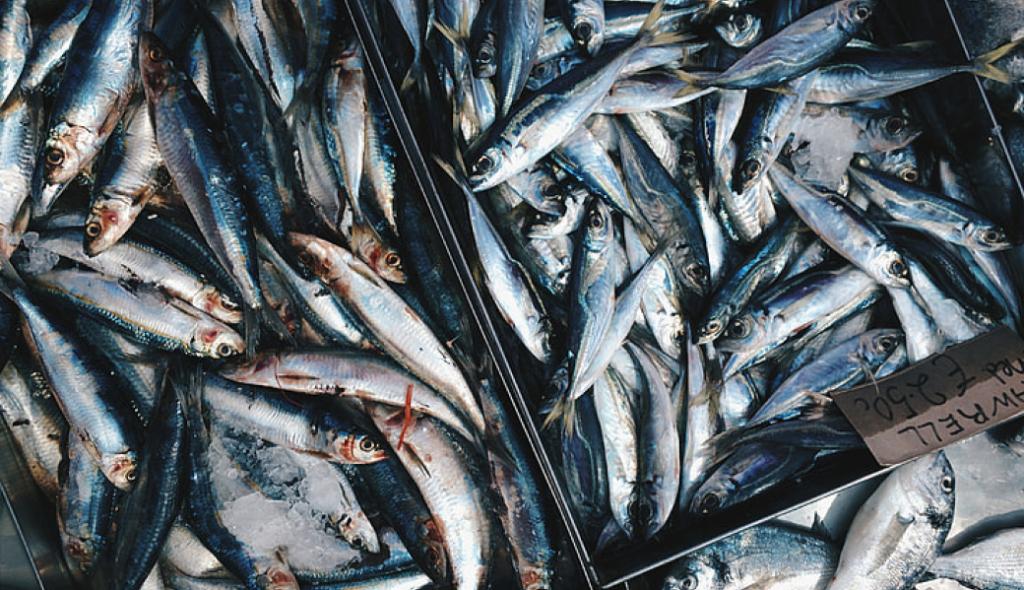Eat Fish? Here’s how to recognize good or bad fish at the market

For many Nigerians, fish is a regular delicacy in our meals. It is considered a much healthier source of protein compared to red meat products like beef, chevon (goat meat) and pork. Among the variety of fish options available, frozen fish is the most readily available and has more variety in most Nigerian markets compared to fresh fish. Such varieties include the ones locally named alaran (mackerel), kote (horse mackerel), panla (hake fish), shawa (herrings), etc. For fresh fish, most of them are found and sold around riverine areas. An exception to this is catfish (eja aro in Yoruba) which are commonly bred in artificially-designed fish ponds.
Regardless of your preference, for health and aesthetic reasons, the fish you eat should be well-preserved and without spoilage or contamination. To ensure this, fish considered deep frozen must remain frozen always to preserve its quality and integrity (FAO, 1994). Also, the storage period must be regulated as different varieties of fish remain good in the freezer for different lengths of time. For example, salmon retains its quality for two to three months, while cod stays good for six to eight months. As the conditions above can not be monitored by consumers, it is important to know how to recognize and differentiate between good and bad fish.
Fish spoilage is usually accompanied by several visible changes in the spoiling fish. Therefore, at any time you visit the market or fish vendor to purchase your fish, watch out for some key signs and pointers.
A spoiled fish, unfit for consumption has the following characteristics;
- a slimy film over the surface of the fish which indicates the presence of actively-growing bacteria, often responsible for most fresh fish spoilage
- an unpleasant, rotten, off-odour smell
- cloudy eyes, sunken into the fish head. For a fresh or well-preserved fish, the eyes are clear, bright, bulging, and shiny
- dried gills, covered with sticky slime, greyish-brown in colour and smelling bad. For fresh and well-preserved frozen fish, the gills and fins are moist with a nice, bright red colour.
- discoloured and cracked skin alongside gradual scale loss. For fresh and well-preserved fish, the skin is moist, must have a naturally metallic glow and the scales must still be tightly attached to the body.
- Also, the body is soft, grey and inelastic. For fresh fish, the body is firm, has a specific consistency, appearance and elasticity.
- Furthermore, the anal opening sticks out and is yellow-brown in colour. For fresh or well-preserved fish, the belly is shiny and undamaged, and the anal opening is tight.
How do you preserve fresh or deep-frozen fish?
Fresh fish is easily spoilt by bacteria at room temperature. Most of these bacteria can not grow at temperatures below 10oC (FAO, 1994). Hence, fish should be kept on ice for 10-15 days or in coolers under the temperature of around 0°C (FAO, 1994). Prior to this, it should be cleaned and gutted immediately after being caught. It can also be placed in shallow crates, mixed with ice, and sold the next day. However, the fish must be entirely covered with ice and the crate bottom must be permeable so that water can leak out.
For frozen or deep-frozen fish, it must not be kept in storage longer than twelve months (Tavares et al., 2021). Expiration date must be regularly checked as well as the conditions and quality of frozen products. Also, when keeping fish in freezers, the temperature must not be lower than -18°C to -40°C, otherwise the fish’s nutritional value, taste, flavour, odour, and meat quality might deteriorate (Hall, 2010; Tavares et al., 2021).
Now you know how to differentiate between good and bad fish at the market. You are welcome!
References
Food and Agriculture Organization. (1994). Freezing and refrigerated storage in fisheries. FAO. https://www.fao.org/3/V3630E/V3630E00.htm#Contents
Hall, G. M. (2010). Freezing and chilling of fish and fish products. Fish Processing: Sustainability and New Opportunities, 77-97.
Tavares, J., Martins, A., Fidalgo, L. G., Lima, V., Amaral, R. A., Pinto, C. A., Silva, A. M. & Saraiva, J. A. (2021). Fresh Fish Degradation and Advances in Preservation Using Physical Emerging Technologies. Foods. 10(4):780. https://doi.org/10.3390/foods10040780
Author

Damilola Samuel Adesuyi
Damilola Adesuyi is an early career researcher with passion for research and implementation of One Health strategies in addressing public health issues including food safety, antimicrobial resistance and infectious diseases.
He currently works as the Program Assistant for Public Health at the One Health and Development Initiative where he leads and contributes to the implementation of advocacy and research projects in Antimicrobial Resistance, Zoonosis and One Health.
